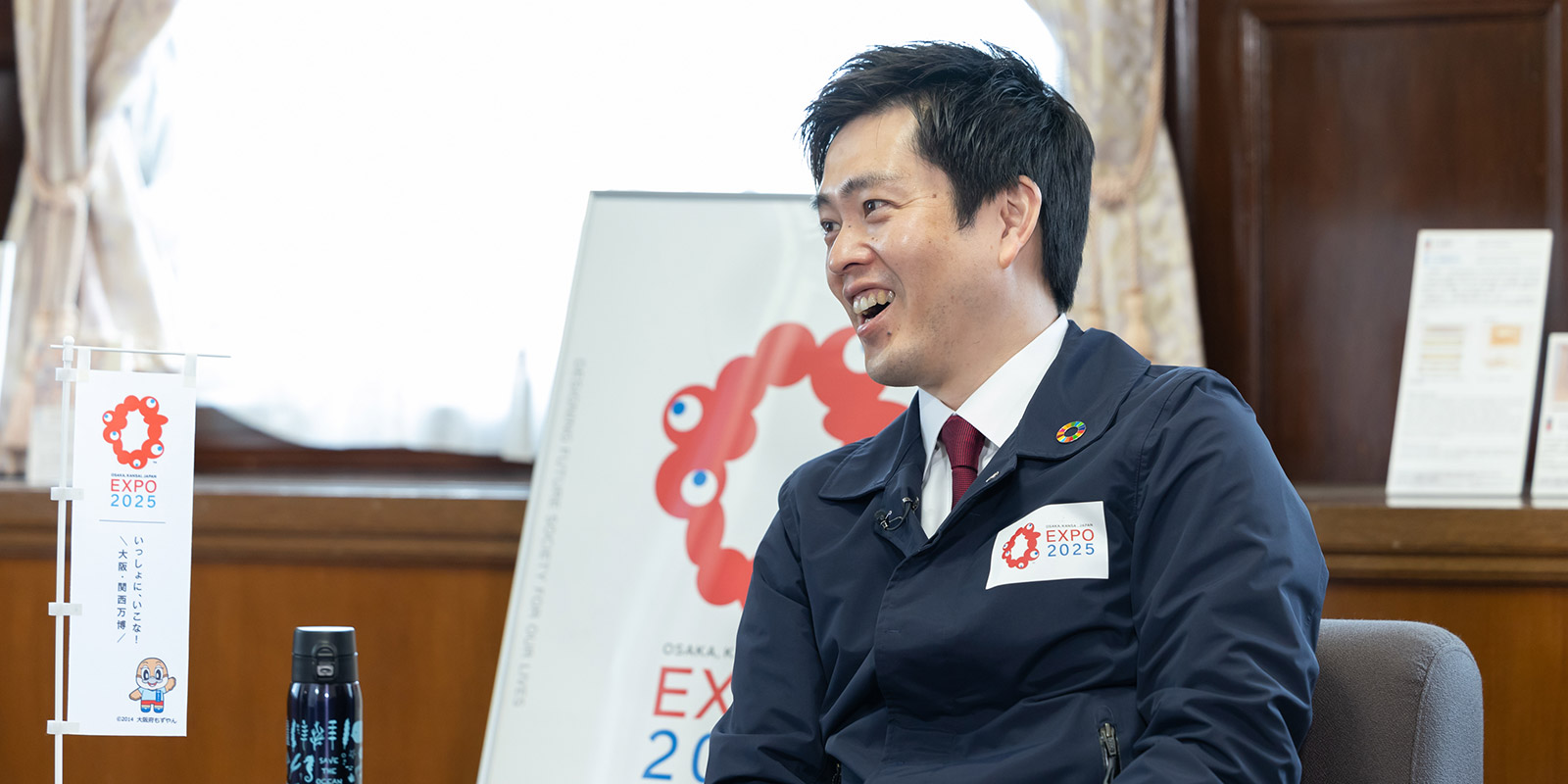Mr Osaka
Hirofumi Yoshimura is a man with Osaka in his blood. A former attorney, he has represented Osaka as a city councilor, as a member of the national Diet, as mayor and, since 2019, as governor. He talks to Koichi Sakai about his plans for Osaka and how he is relishing the world’s attention in the run-up to the 2025 World Expo
Now that the Tokyo Games are over, people’s attention is turning to Expo 2025 Osaka, Kansai, Japan. What’s your view of the Expo and its significance?
To be held under the theme of “Designing Future Society for Our Lives”, the Expo will symbolize the start of a new, post-pandemic age. It is being held five years before 2030, the target year for the United Nations Sustainable Development Goals (SDGs), making it an ideal opportunity to review the progress made so far toward achieving the SDGs and to build a future together with the rest of the world. I would like this Expo to be a powerful source of inspiration for imagining the future of Japan and the world 50 years from now. That’s what we are preparing for.
How are the plans for the Osaka Pavilion shaping up?
Our goal is to present an exhibit that will allow visitors to experience the city of the future, where they can take a step toward tomorrow in line with “Reborn,” the theme of the exhibit. We hope to present a story about urban life around 2050, with visitors taking on the roles of residents of the city of the future.
 Koichi Sakai and Hirofumi Yoshimura | Takashi Muso
Koichi Sakai and Hirofumi Yoshimura | Takashi Muso
“We will allow visitors to experience the city of the future”
Virtual Osaka is an interactive site that aims to bring the Expo to life. How is development coming along?
The site has been open to the public since February 28, and its strength is that visitors can interact and experience things regardless of distance or language. We would like Virtual Osaka to function as a platform for exciting and surprising content that showcases Osaka’s charms, attracting the participation of people around the world. We hope as many people as possible will take an interest in Osaka and the Expo, and are working toward having those who form connections through Virtual Osaka visit the Expo in real life, too. For example, avatars will be able to play games with each other and enjoy content linked with real-world events. We’ll be adding more content as we go, so please, everyone, create an avatar and experience Virtual Osaka.
Following the Glasgow Declaration at the COP26 conference last year, decarbonization is of growing concern. How will the Expo deal with this issue?
The Osaka-Kansai Expo is being positioned as a “People’s Living Lab,” i.e. a testing ground for various innovations, so it will be an opportunity to accelerate efforts aimed at achieving a carbon-neutral society by 2050. The Osaka prefectural government is aiming to achieve zero emissions both inside and outside the Expo site by utilizing cutting-edge technologies such as power generation using hydrogen and ammonia, which emit no CO2, and CO2 separation and capture from the atmosphere and conversion into concrete. In the interest of reducing emissions, access to the Expo site will be mainly by train, and the Osaka Metro Chuo Line is currently being extended to Yumeshima Island. In order to encourage visitors to come by train instead of car, we are working with Osaka Metro to increase the frequency of trains during peak hours.
We are promoting the introduction of electric and fuel cell buses. The new buses won’t only be used during the Expo, but also before and after it, which will contribute to decarbonizing the entire prefecture. Osaka is known as a city of water, so I hope to have transportation by electric-powered boat play a role too.
 Hirofumi Yoshimura | Takashi Muso
Hirofumi Yoshimura | Takashi Muso
What do you hope the legacy of the Osaka-Kansai Expo will be?
As hosts, Osaka and the rest of Kansai must not only ensure the success of the Expo, but also use it as a catalyst for the growth and development of the region. The Osaka prefectural and city governments, the national government, and the private sector must work together to bring about new technologies, services, and other innovations, and showcase them both inside and outside the Expo site to attract visitors. The entire region will work to embody the Expo’s concept of being a “People’s Living Lab” by taking advantage of the region’s strengths in fields such as the life sciences, thereby promoting Osaka/Kansai to the world as a region brimming with innovation. Lastly, I would like the Expo to be a place where young people can feel inspired.
How does the Expo fit into your wider plans for Osaka?
Up to now I have overseen a variety of initiatives aimed at achieving an Osaka that is dynamic and continues to grow on the world stage. We have hosted a G20 summit, had the Mozu-Furuichi Kofun Group registered as a UNESCO World Heritage Site, worked toward Osaka hosting an integrated resort in the future, and promoted the development of a startup ecosystem. However, having had to direct much of my efforts to responding to the pandemic, I believe that my most important mission is to overcome this unprecedented crisis, all while firmly establishing Osaka as the “second capital” that will lead Japan’s growth as the western counterpart to Tokyo, putting Osaka back on the growth track while looking ahead to the post-pandemic era. To this end, first of all, I hope to lead the 2025 Osaka-Kansai Expo to success by mobilizing the power of Japan and the wider world.
You can experience Virtual Osaka online at virtualosaka.jp